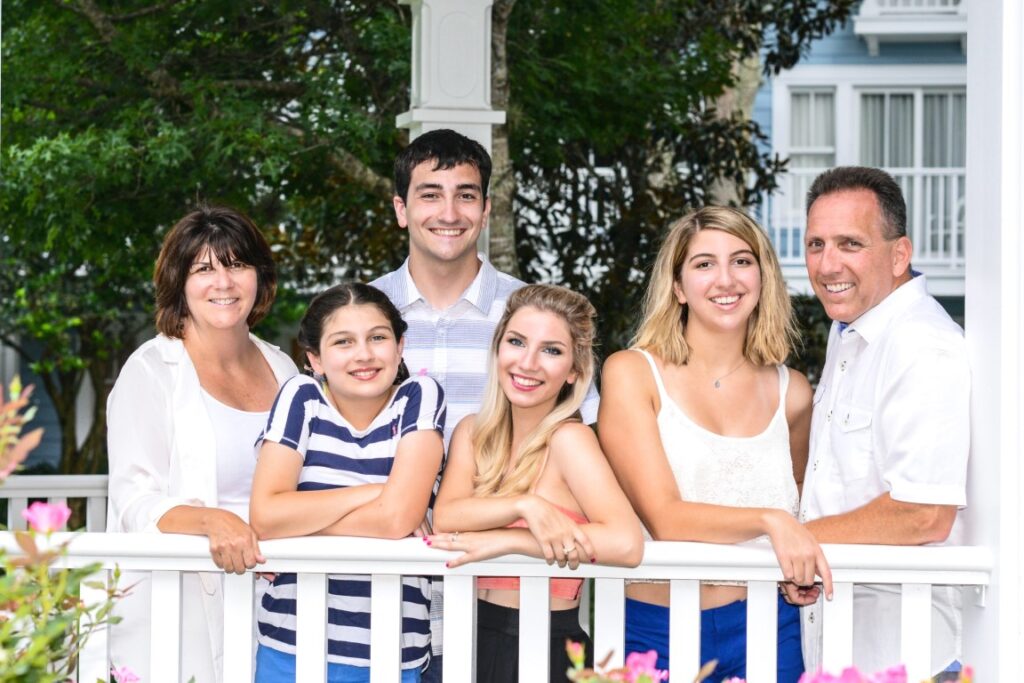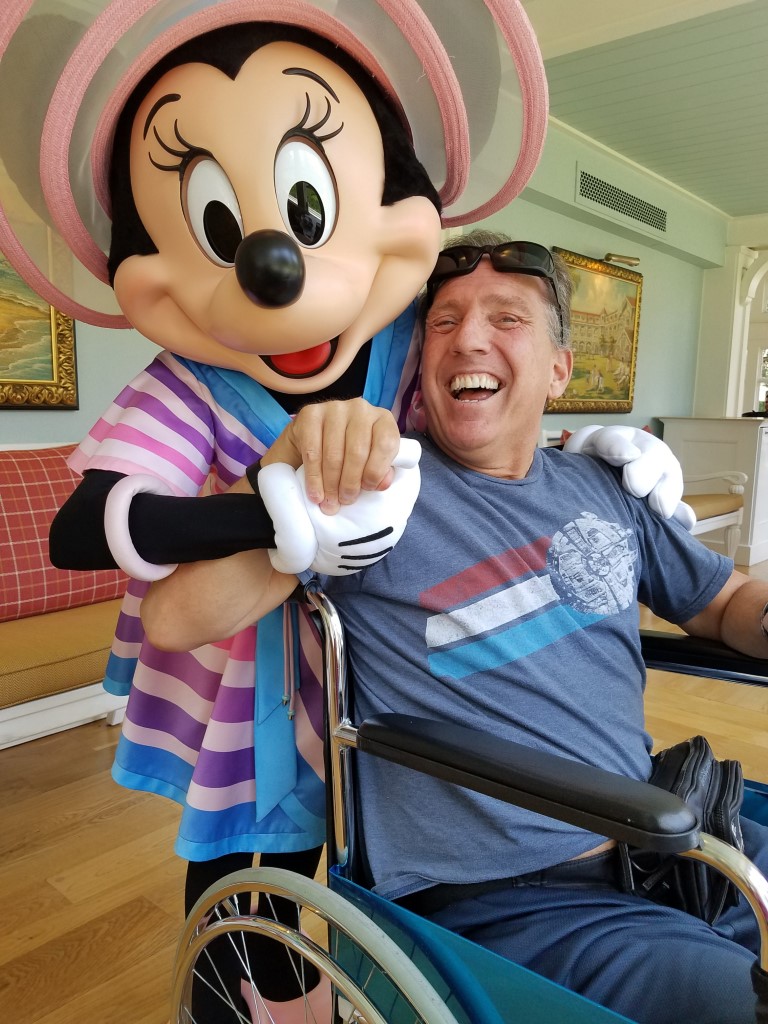Tom Connor loved Disney World.
“We spent our vacations at Disney,” remembers his wife, Sheila. “Sometimes we went more than once a year. Tom’s idea of a vacation was getting to the parks at 7 a.m. and staying until late in the evening.”
Tom loved roller coasters and Walt Disney’s vision of creating a special place where families could spend time together and make memories. And going to the park with his four kids? That made a magical trip even more magical.
“Any time he could spend with his kids was a golden time for him,” Sheila says.
Tom even loved visiting Disney when he needed to be in a wheelchair and could no longer ride roller coasters. As long as he was there and with his family, he was happy.
Tom suffered from a rare, incurable disease called CADASIL, and since his death in 2022, Sheila has become a tireless advocate, spreading awareness about this misunderstood, misdiagnosed, and often unknown disease to create a better life for future generations of patients.

What is CADASIL?
CADASIL is a hereditary vascular disease that’s caused by a mutation in a single gene: Notch3. People with CADASIL experience strokes that damage the brain, often leading to dementia and other cognitive, mood, and motor changes. It’s progressive and devastating, and it can cause premature death.
“It causes small, tiny strokes in the brain,” says Swati Sathe, MD, a CADASIL researcher who is vice president of clinical research at CHDI Management and an adjunct professor of neurology at NYU Grossman School of Medicine. “Mostly in the white matter, in the deeper parts of the brain. And these repeated strokes gives rise to white matter disease.”
Although CADASIL is a hereditary condition that people are born with, it’s very hard to diagnose because it shows up in different ways throughout someone’s life, Sathe explains. When a patient with CADASIL is in their 20s, it causes migraines. Later, in a patient’s 30s and 40s, CADASIL might cause stroke-like episodes, but an MRI might look as though they have multiple sclerosis. In later stages, patients with CADASIL experience dementia, but even then, those patients’ MRIs seem to show vascular dementia.
“It is hard to diagnose, mostly because it’s a great masquerader,” Sathe says. “Because it mimics a much [more] common condition at every stage of its presentation, it’s a very difficult catch.”
In fact, despite its being the most common form of hereditary stroke, most people have never heard of CADASIL, and many patients struggle to find the correct diagnosis.
Tom’s story
That’s what happened to Tom, who searched for answers for a year after experiencing his first big stroke in 2015.
“We didn’t know what was wrong with him. They couldn’t figure it out,” Sheila says.
Although his first sizable stroke came in 2015, Tom had actually been experiencing symptoms of CADASIL for a few years already in the form of depression and anxiety.
“Tom was a very mild, easygoing guy. Nothing ever bothered him; take it as it comes,” Sheila says. However, he’d been going through upheaval at work and moving to North Carolina from Massachusetts, and doctors attributed his mood changes to stress.
But his first 2015 stroke—and another a month later—raised a red flag. In addition, an MRI showed that he’d had microbleeds and silent strokes before the first big one. Stress might explain mood changes, but it couldn’t explain strokes.
“Tom was directed, after a year, to a forensic neuropsychiatrist,” Sheila says. This clinician listened to Tom’s symptoms and experiences for just 20 minutes before saying that he suspected CADASIL.
“We were like, OK, what’s that?” Sheila says. A genetic blood test confirmed the diagnosis, but even that didn’t bring relief.
“They basically said there’s no treatment, there’s no cure; just live as best you can.” Sheila says. “Then we were kind of left on our own.”

But that wasn’t good enough for Sheila. They moved back to the Boston area and kept looking for more help, eventually finding a physician who gave them a real explanation of the disease, including what to expect and strategies for managing Tom’s health, even as he kept experiencing strokes.
“I wasn’t going to take no for an answer,” she says. “Whatever he needed to do to stay physically healthy and mentally healthy, he was all for it.”
As Tom’s disease progressed, the family—including their four children—moved to Florida, hoping that warmer weather would help with his symptoms and fulfilling Tom’s dream to retire there.
“We were able to spend time going to Walt Disney World,” Sheila says. She and their children were able to care for Tom at home for several years.
Then in 2022, Tom suffered a large stroke and another a few months later. Soon, Sheila brought hospice in, and Tom died of CADASIL in July 2022.
Raising awareness
Although CADASIL is incurable, awareness of it among the public and healthcare professionals is critical.
“The importance of accurate diagnosis cannot be overemphasized,” Sathe says.
Having a CADASIL diagnosis will prevent patients from receiving treatments they don’t need or that might harm them. For instance, many CADASIL patients receive multiple sclerosis treatments they don’t need before being accurately diagnosed. And in stroke, using a thrombolytic agent—the standard treatment for many patients—could actually be dangerous for people with CADASIL. Sheila carried around a sheet of paper explaining that, “Tom has CADASIL. Do not give him the normal medication you would give a stroke patient.”
Sheila and Tom did their best to live with a devastating, incurable disease. But they weren’t just looking for answers for themselves. They were also fighting for future generations of CADASIL patients, some of whom might include their own children, since the disease is hereditary. Tom participated in the NIH’s CADASIL disease discovery protocol, a study to help researchers learn more about the disease.
Sheila is continuing that advocacy work nearly two years after Tom’s death. She’s on the community advisory group for cureCADASIL, a nonprofit dedicated to CADASIL research, and a board member for thinkCADASIL, which aims to raise awareness about the disease among the public.
“He knew there wasn’t going to be an answer for him. But he did it for the kids,” Sheila said. “He hoped that taking part in the study would further research for the next generation, for his kids and everybody else to come.”

